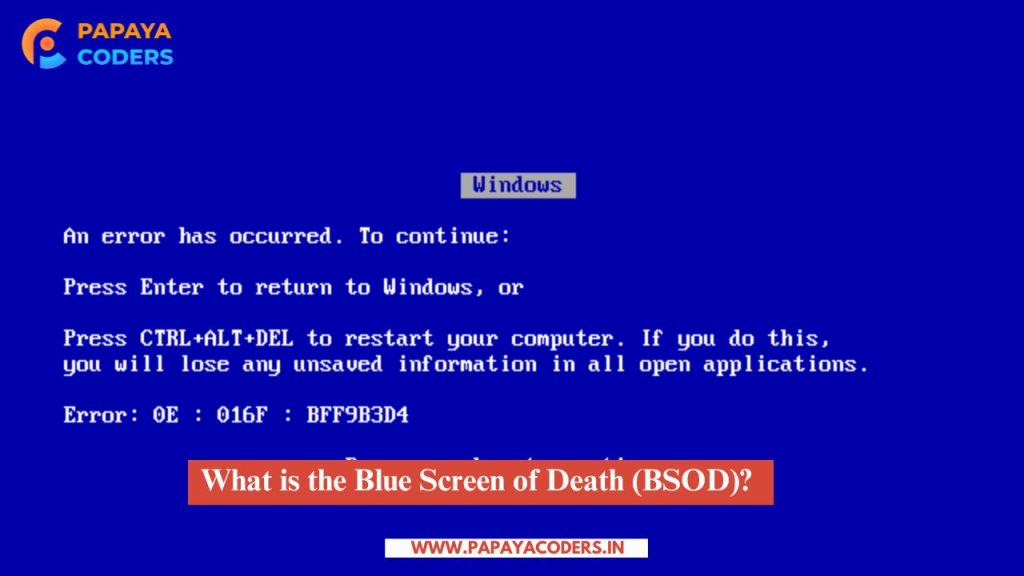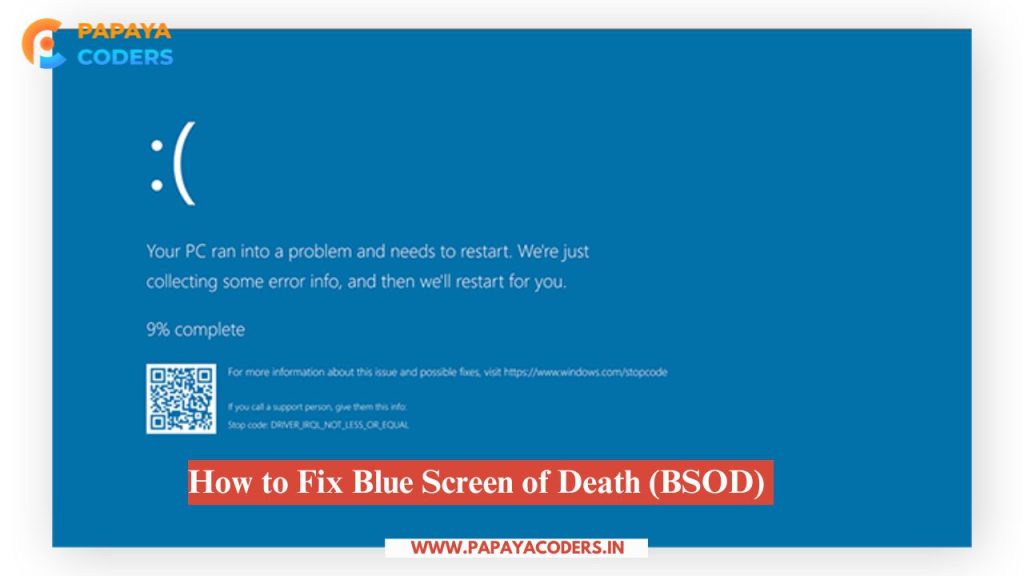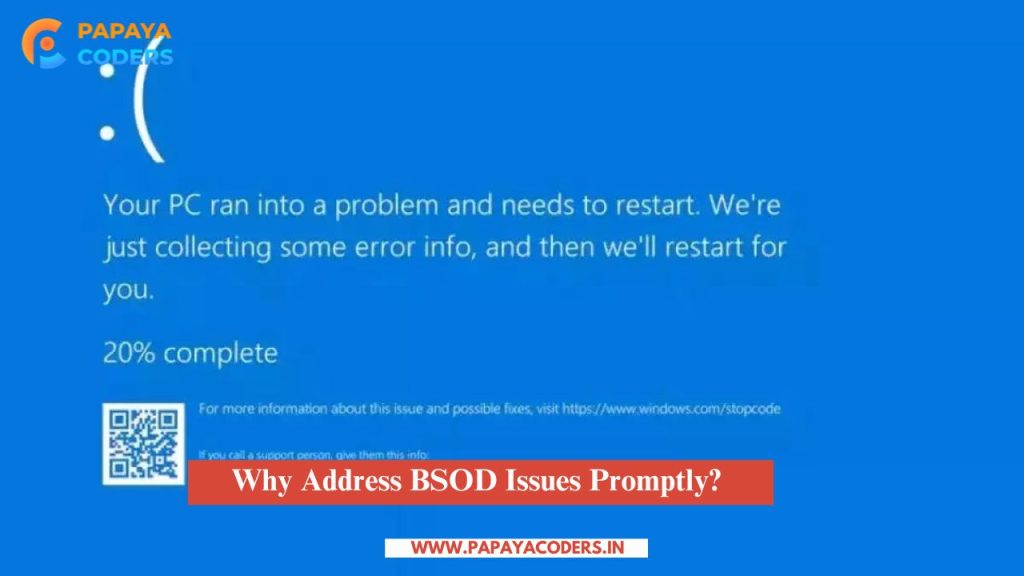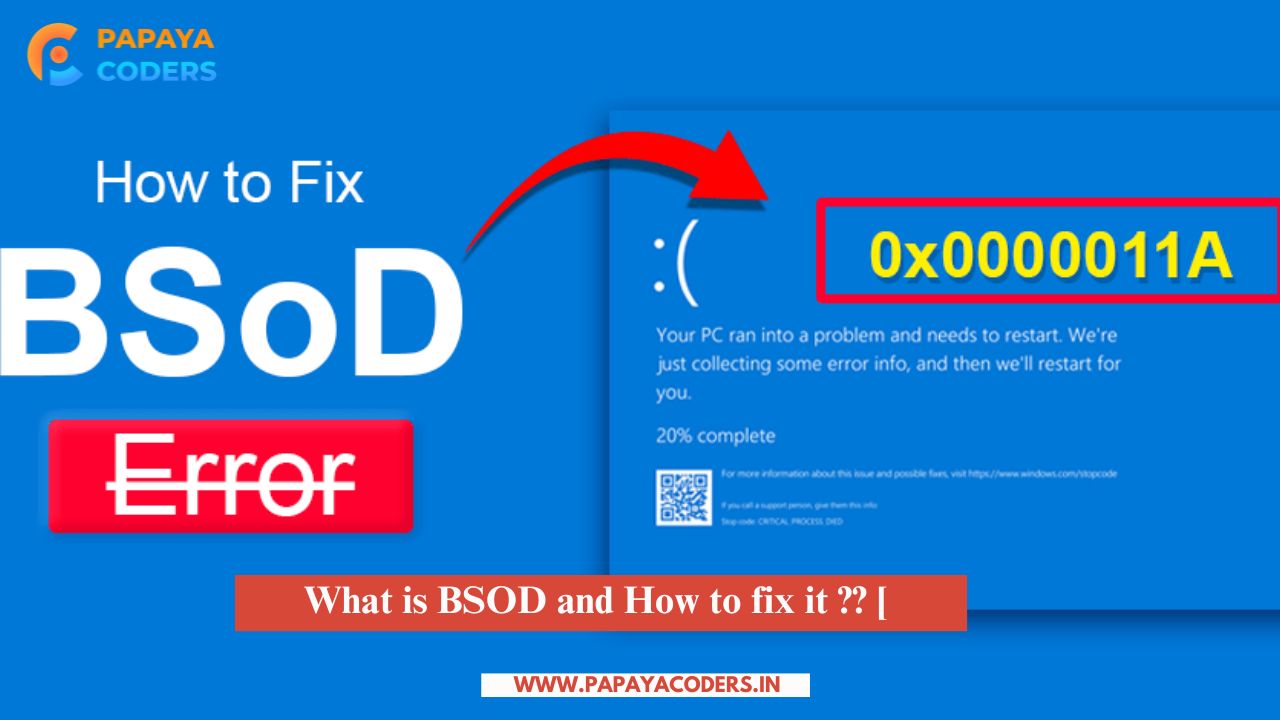The Blue Screen of Death (BSOD) is one of the most dreaded errors for Windows users. Commonly referred to as a stop error, the BSOD occurs when the Windows operating system encounters a critical issue that forces the system to shut down to prevent damage.
This guide will explain What is BSOD and How to fix It, its causes, and how to resolve it effectively.
What is the Blue Screen of Death (BSOD)?
The BSOD screen appears when your computer experiences a system crash or a critical error. This screen has a blue background, a sad face emoticon, an error code, and a brief problem description.

Key Features of BSOD:
- Displays an error message and a stop code (e.g., “IRQL_NOT_LESS_OR_EQUAL” or “PAGE_FAULT_IN_NONPAGED_AREA”).
- Automatically restarts the system unless the setting is manually changed.
- Occurs due to software or hardware issues.
Common Causes of Blue Screen of Death (BSOD)
Understanding the root cause is essential for resolving the issue. The most frequent causes include:
| Cause | Description |
|---|---|
| Driver Issues | Corrupted or outdated device drivers. |
| Faulty Hardware | Damaged RAM, hard drives, or GPUs causing issues. |
| Overheating | Excessive heat leads to component malfunction. |
| Software Conflicts | New programs or updates conflicting with system. |
| Virus/Malware | Corrupts system files, leading to crashes. |
| Overclocking | Performance tweaks causing instability. |
How to Fix Blue Screen of Death (BSOD)
Here are actionable steps to diagnose and resolve BSOD errors:

1. Restart Your Computer
Sometimes, a simple restart resolves temporary glitches. If the BSOD persists, proceed with further troubleshooting.
2. Note the Stop Code
When the BSOD occurs, take note of the stop code displayed on the screen. Examples include:
- CRITICAL_PROCESS_DIED
- SYSTEM_SERVICE_EXCEPTION Search for these codes online to identify specific issues and solutions.
3. Check for Windows Updates
Outdated software can cause conflicts. Ensure your Windows operating system is up to date:
- Go to Settings > Update & Security > Windows Update > Check for Updates.
4. Update Drivers
Outdated or incompatible drivers are a common cause of BSOD. Update your drivers by:
- Using Device Manager.
- Downloading drivers from the manufacturer’s website.
- Using driver update software.
5. Run a System File Check
Corrupted system files can lead to errors. Use the SFC (System File Checker) tool:
- Open the Command Prompt as an administrator.
- Type
sfc /scannowand press Enter. - Wait for the process to complete and follow the instructions.
6. Test Your Hardware
Faulty hardware can cause BSOD. Run diagnostic tests to check for issues:
- Use Windows Memory Diagnostic to test your RAM.
- Run CHKDSK to scan and repair the disk.
chkdsk C: /f /r
- Check for overheating and ensure proper ventilation.
7. Uninstall Problematic Updates or Software
If the BSOD started after a recent update or software installation:
- Go to Settings > Apps and uninstall the software.
- Roll back Windows updates through Update & Security > View Update History > Uninstall Updates.
8. Scan for Malware
Run a full scan using reliable antivirus software to detect and remove malware that may be causing the issue.
9. Disable Overclocking
If you’ve overclocked your system, revert to default settings through your BIOS/UEFI menu.
10. Perform a System Restore
If all else fails, perform a system restore to revert your computer to a previous working state:
- Go to Control Panel > Recovery > Open System Restore.
- Choose a restore point and follow the instructions.
Preventing Future BSOD Errors
To minimize the chances of encountering a BSOD:
- Keep your system and drivers up to date.
- Avoid installing unverified or incompatible software.
- Regularly clean your PC to prevent overheating.
- Invest in reliable antivirus software.
Why Address BSOD Issues Promptly?
Ignoring BSOD errors can result in:-

- Data Loss: Unsaved work is lost during unexpected crashes.
- Hardware Damage: Repeated crashes can harm hardware components.
- Reduced Productivity: Persistent errors interrupt workflow and cause frustration.
By addressing these issues promptly, you’ll ensure a smoother and more reliable computing experience.
Conclusion:-
The Blue Screen of Death (BSOD) may seem intimidating, but with the right approach, it’s manageable. Understanding its causes and solutions is crucial for maintaining system stability. Follow the steps above to troubleshoot and resolve BSOD errors effectively.
Pro Tips:- Regular maintenance and updates can prevent most BSOD occurrences. Bookmark this guide and share it with friends to help them easily tackle BSOD issues!
If you like this, What is BSOD and How to fix it ?? post, then comment and share your opinion.
You can follow Papayacoders on Twitter, Facebook, Instagram, and Google News. Visit papayacoders.in for the most recent news, reviews, and tech guides. In my previous blog on Create Best App for Your Business, I ended the post by linking to one of our final guides.
Attention Readers! Join us on WhatsApp Community for daily auto news updates.








